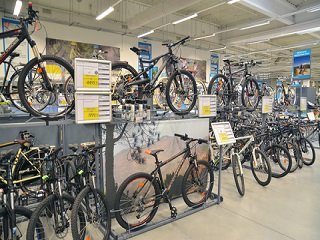 Money doesn’t grow on trees. I know; try to contain your shock. This harsh truth hits us all at a certain age, and can be quite frustrating when it comes to indulging in our favorite pastimes, such as hiking, fishing, or biking. Having a budget doesn’t have to keep you from biking, though; you just have to filter your needs and wants through a budget-minded lens. Today we’ll take a look at some tips for shopping for a bike on a budget.
Money doesn’t grow on trees. I know; try to contain your shock. This harsh truth hits us all at a certain age, and can be quite frustrating when it comes to indulging in our favorite pastimes, such as hiking, fishing, or biking. Having a budget doesn’t have to keep you from biking, though; you just have to filter your needs and wants through a budget-minded lens. Today we’ll take a look at some tips for shopping for a bike on a budget.
With such a wide variety of bikes out there, you’ll find a large spectrum of prices to match. This is due to the different materials that are used to craft bikes, as well as the quality of the bike’s components. Generally speaking, though, the lighter a bike is, the more expensive it will be, because higher quality components tend to mean less overall weight with increased cost.
Casual riders won’t really notice a dramatic difference in overall bike weight during their ride, so lighter bikes that have a higher cost may not be the best bet for them. Racers and competitive riders will find lighter bikes to be a performance hindrance, so keep that in mind, as well. Of course, you don’t want to buy a cheap bike that won’t last, either.
Prices can vary greatly from brand to brand and even within a single brand’s production range, but there is a general price vs quality school of thought to keep in mind. For example, if a bike costs less than $500, you’ll typically find it to have a heavier frame and low-end components. If it’s made by a reputable company, though, it should still be a good ride. Bikes between $500 and $1,200 are usually made from mid-quality components and offer medium-grade frames. These bikes are ideal for intermediate riders who plan on more frequent rides and will appreciate the lighter weight. If you find bikes that cost more than $1,200, they’ll tend to offer lightweight frames with mid to high-end components that serious cyclists and racers will love.
The best advice that I can give is pretty much the same advice I always seem to give: Consider how often you’ll use your bike and how much you can comfortably afford. If you underestimate your potential for growing as a rider, you could end up having to upgrade too quickly, which would cost more in the long run. Then again, if you only plan to ride occasionally and casually, a less expensive bike will most likely work just fine for your needs.








